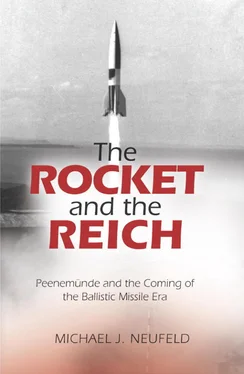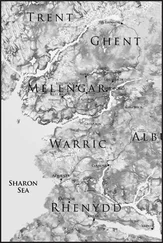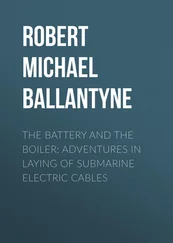Michael Neufeld - The Rocket and the Reich
Здесь есть возможность читать онлайн «Michael Neufeld - The Rocket and the Reich» весь текст электронной книги совершенно бесплатно (целиком полную версию без сокращений). В некоторых случаях можно слушать аудио, скачать через торрент в формате fb2 и присутствует краткое содержание. Город: Washington, Год выпуска: 2013, ISBN: 2013, Издательство: Smithsonian Books, Жанр: История, military_weapon, на английском языке. Описание произведения, (предисловие) а так же отзывы посетителей доступны на портале библиотеки ЛибКат.
- Название:The Rocket and the Reich
- Автор:
- Издательство:Smithsonian Books
- Жанр:
- Год:2013
- Город:Washington
- ISBN:978-1-58834-466-3
- Рейтинг книги:3 / 5. Голосов: 1
-
Избранное:Добавить в избранное
- Отзывы:
-
Ваша оценка:
- 60
- 1
- 2
- 3
- 4
- 5
The Rocket and the Reich: краткое содержание, описание и аннотация
Предлагаем к чтению аннотацию, описание, краткое содержание или предисловие (зависит от того, что написал сам автор книги «The Rocket and the Reich»). Если вы не нашли необходимую информацию о книге — напишите в комментариях, мы постараемся отыскать её.
The Rocket and the Reich — читать онлайн бесплатно полную книгу (весь текст) целиком
Ниже представлен текст книги, разбитый по страницам. Система сохранения места последней прочитанной страницы, позволяет с удобством читать онлайн бесплатно книгу «The Rocket and the Reich», без необходимости каждый раз заново искать на чём Вы остановились. Поставьте закладку, и сможете в любой момент перейти на страницу, на которой закончили чтение.
Интервал:
Закладка:
ROCKET PLANES AND THE LUFTWAFFE ALLIANCE
Before 1935 the Air Ministry Technical Office and its predecessor, Section 8 (aviation) of Ordnance Testing Division, had dismissed the possibility of rocket propulsion for high-speed aircraft. In line with the Army’s drive for a rocket monopoly, the Ministry had made “agreements” with Ordnance, leaving the latter in control of the technology. All that was to change soon after the beginning of the year. 4
The key figure in forging the interservice rocket alliance was Major Wolfram Freiherr von Richthofen, a cousin and squadronmate of the Red Baron of World War I fame. He was an ace himself, having shot down eight enemy airplanes in 1917–18. Later a Field Marshal and one of the Luftwaffe’s most successful operational commanders, von Richthofen in early 1935 was the enthusiastic new head of the Technical Office’s Development Division. Von Braun remembers a visit by him to Kummersdorf in January, during which he showed a lively interest in their projects. In early February von Richthofen wrote to Section 1 about an accident at the Junkers Aircraft Company works in Dessau. An explosion there had injured a company official and had revealed the firm’s sponsorship of Johannes Winkler’s liquid-fuel rocket development. A week later Captain Leo Zanssen and Wernher von Braun went to Dessau to investigate and to impress upon the company Ordnance’s obsession with secrecy. The two concluded that Winkler’s work was backward compared to their own but that it was useful for him to explore alternative technological paths. Most important, the Junkers job satisfied Ordnance’s interest in keeping Winkler out of the public eye. The results of the investigation and a company report, probably written by Winkler, were passed along to the Air Ministry, which had awaited them with interest. 5
The cooperation between Section 1 and the Technical Office did not immediately foster an interservice alliance. But a delegation including Zanssen, von Braun, the important aerodynamicist Dr. Adolf Busemann, the aircraft designer Willi Messerschmitt, and a number of Air Ministry officials went to Munich in March to observe the privately financed experiments of Paul Schmidt. Schmidt, an engineer and independent inventor, had been working with meager resources to realize the idea of a pulsejet, a form of air-breathing reaction propulsion with intermittent combustion. In heavily modified form, Schmidt’s invention would become the engine of the Luftwaffe-developed V-1 cruise missile or “buzz bomb” launched by the thousands against London and the Belgian port of Antwerp in 1944–45. In 1935, however, the Luftwaffe was interested mostly in the pulsejet’s possibilities for aircraft propulsion, which Schmidt had been pushing since 1930. Zanssen and von Braun represented Ordnance, because it was thought that the Army might wish to pursue an automatic “aerial torpedo,” i.e., a cruise missile. At that time the concept was perceived as closer to an artillery projectile than to an unmanned airplane. 6
It was not the first time the Army had received a cruise missile proposal. In October 1934 the inventor Hellmuth Walter had contacted Becker about the possibility of an “aerial torpedo” based on a ramjet. (A ramjet is essentially a tube that compresses air solely by the ram effect of the front opening at high speeds. The air is then burned with a fuel—Walter suggested oil—to produce thrust.) Since a ramjet has to be boosted to a high velocity to work, Walter had proposed burning the fuel in a rocket engine with highly concentrated hydrogen peroxide until supersonic cruise velocity was reached. Since 1930 he had been working with the Navy on hydrogen peroxide as a propellant for ship and U-boat turbines and torpedoes. He had also had discussions with the Air Ministry in 1934 on the use of the rocket-ramjet combination in “high-speed aircraft.” The ramjet idea was as yet too technically difficult, although Walter did carry out some preliminary experiments a few years later, but Ordnance began to act as a consultant to Walter’s hydrogen peroxide rocket development in late 1934, without investing any money. In the case of Schmidt’s pulsejet, on the other hand, Ordnance contributed half the research funds to the Air Ministry, which supervised the work. Ordnance accepted this arrangement mostly so that it could keep its eye on the technology. 7
Whatever the technological conservatism of of Ordnance’s former aviation section, the Air Ministry’s contacts with Walter and Schmidt show that it had become receptive to radical new technologies like the jet. As a service without an entrenched establishment, the Luftwaffe was unusually open to revolutionary ideas. German theoreticians were also the international leaders in supersonic aerodynamics and high-speed flight. Those aerodynamicists, who had close connections to the Air Ministry, were aware that the piston-engine, propeller-driven aircraft in a decade or less would reach the limits of its performance. Moreover, technological zeal combined easily with a nationalist or National Socialist zeal for rearmament. The Luftwaffe was imbued, as were the Army and Navy, with a desire to make Germany competitive with, or superior to, other powers as rapidly as possible.
In this expansive and aggressive milieu, von Richthofen promoted the rocket plane as an answer to the problem of high-speed flight. Because the idea of the turbojet engine was unknown outside two or three small groups in Britain and Germany in 1935, and because pulsejets and ramjets seemed as yet far from practical, the rocket was the only reaction-propulsion technology available. On May 10 von Richthofen met Zanssen to discuss the possibility of a Luftwaffe–Army–Junkers experimental rocket plane program. Zanssen mentioned the aviation section’s earlier indifference to the rocket. Von Richthofen indicated that he was of quite another opinion. In the future, bombers could attack at high speeds and at altitudes of over 10,000 meters (33,000 feet). They would be above the ceiling of anti-aircraft fire, and it would be difficult for slow-climbing, propeller-driven fighters to intercept them. (Like almost everyone else at the time, he did not anticipate the invention of radar to increase warning time). A rapid-reaction, high-speed interceptor would therefore become essential. It was basically the concept that would later appear as the world’s only operational rocket fighter, the Messerschmitt Me 163 Comet. 8
On May 22, Section 1 replied with a letter drafted by Zanssen and approved by the Chief of Army Ordnance. It endorsed the feasibility of a joint rocket aircraft program but expressed great reluctance about revealing anything at all to Junkers. Ordnance ruled out working with the Winkler group altogether for secrecy reasons, because the primary application of the rocket was the “liquid-fuel long-range missile,” a revolutionary weapon that could achieve its greatest psychological impact through sudden deployment. “A considerable development lead over foreign countries has been achieved here, the loss of which is regarded as intolerable, above all because of the value to national defense of the moment of surprise.” 9
A little over a month later, the ballistics and munitions section and the Technical Office held a major meeting to work out the terms of the alliance. Professor Otto Mader, Junkers Engine Company’s development chief, also attended. For that June 27 meeting at Kummersdorf, twenty-three-year-old Wernher von Braun wrote an official position paper that must be regarded as Peenemünde’s birth certificate. Because a rocket engine differed little according to its application, he stated, it is “therefore advantageous that in the future as well, the development of the free-flying liquid-fuel rocket and the aircraft rocket engine could be carried out by the same center. Section 1 believes that this goal can be achieved through the future creation of an ‘experimental rocket establishment’.” This center should have some air force personnel, but they would be transferred to the employment of the Army or the center. 10
Читать дальшеИнтервал:
Закладка:
Похожие книги на «The Rocket and the Reich»
Представляем Вашему вниманию похожие книги на «The Rocket and the Reich» списком для выбора. Мы отобрали схожую по названию и смыслу литературу в надежде предоставить читателям больше вариантов отыскать новые, интересные, ещё непрочитанные произведения.
Обсуждение, отзывы о книге «The Rocket and the Reich» и просто собственные мнения читателей. Оставьте ваши комментарии, напишите, что Вы думаете о произведении, его смысле или главных героях. Укажите что конкретно понравилось, а что нет, и почему Вы так считаете.












